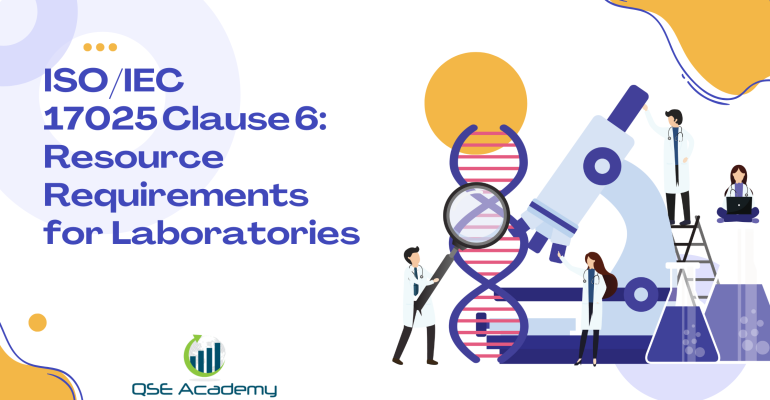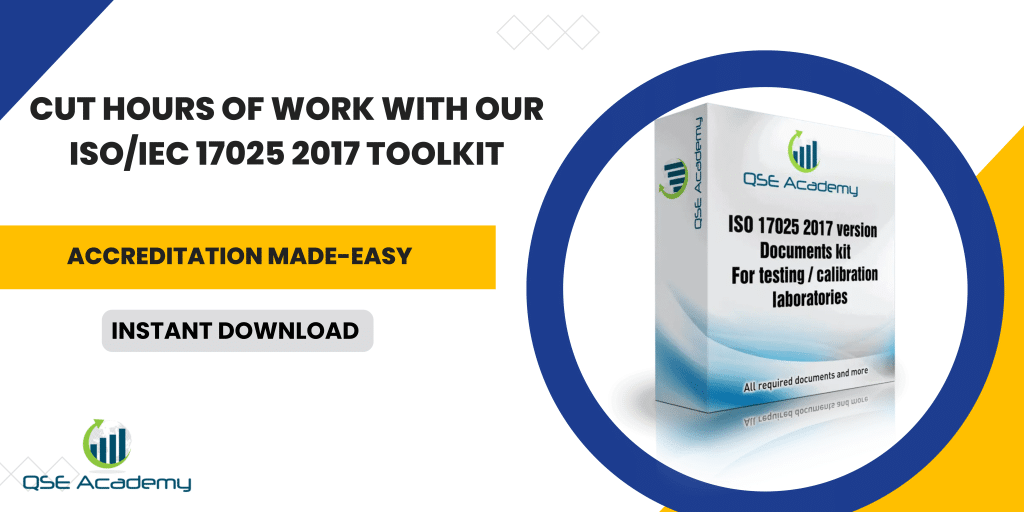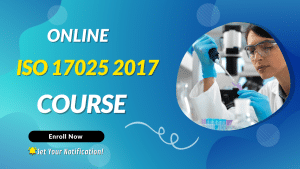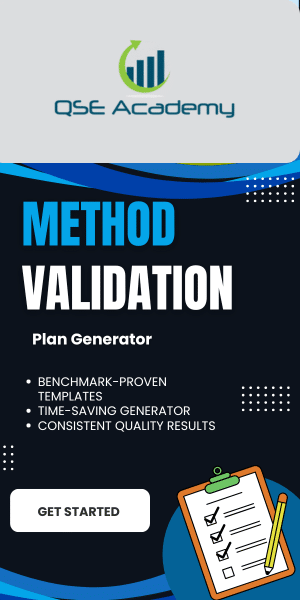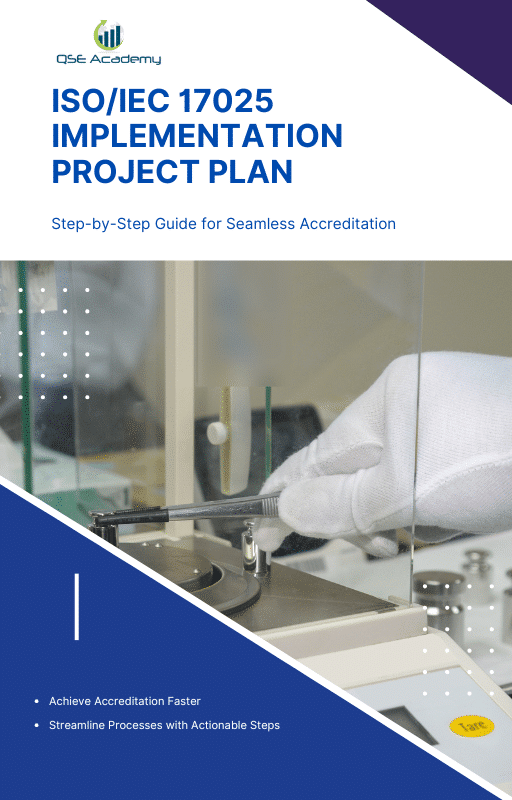ISO/IEC 17025 Clause 6: Resource Requirements for Laboratories
Last Updated on October 13, 2025 by Melissa Lazaro
Why Resources Define Laboratory Competence
Every reliable test result starts with one thing—the right resources, managed the right way.
Over the years, I’ve seen labs that had brilliant staff and top-of-the-line instruments still struggle during ISO/IEC 17025 audits. Why? Because they couldn’t prove control over their people, equipment, or environment. That’s where Clause 6 comes in—it’s the part of the standard that turns capability into credibility.
Clause 6 of ISO/IEC 17025, “Resource Requirements,” is the foundation of laboratory competence. It covers everything your lab depends on: the skills of your personnel, the reliability of your equipment, the conditions of your facilities, and even the quality of your external suppliers. In other words, it defines whether your lab is truly capable of producing valid, consistent, and traceable results.
Here’s what I’ve noticed time and again: labs that treat resources as a strategic priority—not just a compliance requirement—tend to perform better across the board. They make fewer errors, retain clients longer, and handle audits with confidence.
In this article, I’ll break down exactly what Clause 6 requires, how to manage each element effectively, and what auditors expect to see. I’ll also share practical examples from real labs—what worked, what didn’t, and how you can avoid the most common pitfalls.
If you’ve ever wondered what “resource control” really means in ISO/IEC 17025—or how to make it work without unnecessary bureaucracy—you’re about to find out.
Understanding ISO/IEC 17025 Clause 6 — Building the Foundation of Competence
If Clauses 4 and 5 are about ethics and structure, Clause 6 is about capability—the real proof that your lab can deliver accurate, reliable results every single time.
In simple terms, Clause 6 is the part of ISO/IEC 17025 that asks:
“Do you have the right people, equipment, environment, and external support to do your work competently?”
It may sound straightforward, but in practice, it’s where many labs stumble. I’ve seen teams that had brilliant chemists or engineers, but their calibration records were outdated, or their facility’s temperature logs were incomplete. It’s never about intent—it’s about control.
Clause 6 covers five major areas:
-
Personnel – the competence, training, and authorization of your staff.
-
Facilities and Environmental Conditions – ensuring your space supports reliable results.
-
Equipment – controlling and maintaining every instrument that affects measurement accuracy.
-
Measurement Traceability – linking your results back to recognized standards (like SI units).
-
Externally Provided Products and Services – making sure your outsourced suppliers or calibration providers are reliable.
Together, these elements form the backbone of your lab’s technical competence.
Here’s what I’ve learned after years of working with accredited labs: the best ones don’t see resources as an administrative burden—they see them as quality assets. When managed well, they save time, reduce rework, and prevent nonconformities before they ever reach an audit report.
Pro Tip:
Treat every resource as if it were evidence in an audit—because it is. Whether it’s a training record, a calibration certificate, or an equipment maintenance log, your goal is to make traceability clear and effortless.
Common Mistake:
Some labs assume that if equipment “seems fine” or staff “know what they’re doing,” that’s enough. ISO/IEC 17025 doesn’t accept assumptions—it wants proof. Every competency, calibration, and environmental control should have records that back it up.
In short, Clause 6 isn’t about owning resources—it’s about proving control and competence over them. Once you build that system, everything else in your laboratory management becomes more predictable, defensible, and efficient.
Clause 6.2 — Personnel Competence and Authorization
Here’s the truth about most ISO/IEC 17025 audits: the majority of nonconformities start—not with equipment or methods—but with people. Clause 6.2 exists to make sure that everyone performing or reviewing laboratory work is competent, authorized, and accountable.
I’ve seen this play out countless times. A lab might have talented analysts with years of experience, but when I ask to see their documented training records or proof of authorization to sign test reports, the room suddenly goes quiet. That silence tells me one thing—the system isn’t built to show competence, only to assume it.
What Clause 6.2 Requires
The standard expects your lab to:
-
Define competence requirements for each role—technical staff, quality managers, signatories, etc.
-
Ensure personnel are competent before performing specific tasks.
-
Authorize staff in writing to perform, verify, or report results.
-
Monitor and maintain competence through periodic reviews or reassessments.
In short: prove your people are qualified, not just skilled.
How to Build a Strong Competence System
Here’s what works in real labs:
-
Create a competence matrix.
List every critical activity (testing, calibration, data review) and match it with the staff who are trained and authorized to do it. -
Document witnessed training.
Don’t just hand over certificates—have supervisors observe performance and sign off. -
Use periodic assessments.
Competence isn’t static. People forget skills or methods evolve—reassess at least annually or after major changes. -
Record authorizations clearly.
Include the scope of each person’s authority—what they can perform, review, and release.
Pro Tip:
Keep authorizations visible. One lab I worked with kept a laminated “competence dashboard” in their lab office showing who was authorized for each method. When the assessor asked, the answer was instant—and so was the impression of control.
Common Pitfalls
-
Relying on degrees alone.
Having a diploma doesn’t guarantee competence in your lab’s specific procedures. ISO/IEC 17025 focuses on demonstrated ability, not formal education. -
Lack of documented assessments.
Staff may be competent, but without written evidence—observations, evaluations, or supervisor sign-offs—there’s no compliance. -
No clear delegation.
When a senior analyst is absent, who reviews reports? If that’s not documented, auditors will flag it immediately.
Real Example
I once helped a calibration lab that had failed a previous audit for “unclear authorization records.” We introduced a simple system: each technician had a signed authorization form, reviewed annually by management. Within six months, the lab not only passed its reassessment but also reduced rework because everyone knew exactly what they were qualified to handle.
Clause 6.3 — Facilities and Environmental Conditions
You can have the most skilled staff and perfectly calibrated instruments, but if your lab’s environment isn’t controlled, your results can’t be trusted. That’s why Clause 6.3 of ISO/IEC 17025 focuses on something many labs overlook—the conditions in which you work.
I’ve seen this clause trip up labs more than once. One client had all their procedures documented flawlessly, but their temperature logs showed repeated fluctuations during testing hours. Another stored calibrated weights near a window where sunlight caused daily temperature swings. Both had the same problem: they underestimated how much the environment affects measurement reliability.
What Clause 6.3 Really Requires
Clause 6.3 asks you to ensure that your facilities and environmental conditions:
-
Do not compromise the quality or validity of your results.
-
Are monitored and controlled wherever conditions affect testing or calibration.
-
Are documented, with records showing ongoing control and action when deviations occur.
-
Include controls for temperature, humidity, dust, vibration, lighting, noise, and any other relevant factors.
In simpler terms: your lab should be able to prove that the environment supports accuracy, not distorts it.
Practical Ways to Stay Compliant
Here’s what consistently works in well-managed labs:
-
Define environmental parameters for each test or calibration. What matters for microbiology may differ from electronics calibration.
-
Use continuous monitoring—simple data loggers for temperature and humidity can save you from future audit findings.
-
Keep maintenance and calibration logs for monitoring devices. Remember: even your thermometers and hygrometers must be traceable.
-
Set up alerts or triggers for environmental deviations and record corrective actions when they occur.
Pro Tip:
Auditors love seeing evidence of awareness. If a condition goes out of range, document who noticed, what was done, and whether any results were affected. That level of transparency turns a potential finding into proof of effective control.
Common Mistakes to Avoid
-
Overlooking storage areas.
It’s not just the testing room that counts. Storage rooms for samples, standards, or reagents must also meet environmental control expectations. -
Inconsistent monitoring.
Taking manual readings “when someone remembers” isn’t control. Logs should be consistent and reliable. -
Ignoring field conditions.
When testing or calibrating off-site, Clause 6.3 still applies—you need procedures to ensure conditions are suitable or adjustments are made.
Real Example
A calibration lab I worked with struggled with recurring measurement drift. After investigation, we discovered their instruments were being stored in an unmonitored corner of the lab, exposed to temperature fluctuations from nearby machinery. Once they relocated the equipment and added environmental sensors, their results stabilized—and so did their accreditation record.
Clause 6.4 — Equipment and Measurement Traceability
In every audit I’ve been part of, this is the clause that separates a “good lab” from a truly reliable one. Clause 6.4 of ISO/IEC 17025 is all about making sure the equipment you use—and the measurements it produces—can be trusted, verified, and traced back to recognized standards.
I like to think of it this way: your equipment is your lab’s voice. If that voice is uncertain or inconsistent, your results lose credibility—no matter how skilled your staff are.
What Clause 6.4 Requires
This clause covers two major things:
-
Equipment Control – how your lab selects, calibrates, maintains, and labels equipment used in testing or calibration.
-
Measurement Traceability – ensuring every measurement links to a recognized reference (like SI units or certified standards) through an unbroken calibration chain.
In plain language, you need to show that your results aren’t just repeatable—they’re traceable and defensible.
How to Stay Compliant (and Confident)
Here’s what works in practice:
-
Keep an Equipment Master List.
This single document should track every instrument that affects quality—serial numbers, calibration dates, status, and next due dates. -
Label everything clearly.
Every piece of equipment should have a status tag showing whether it’s “In Service,” “Under Calibration,” or “Out of Use.” -
Plan calibrations based on risk.
Don’t just follow the calendar. High-use or high-impact equipment may need more frequent calibration than low-use items. -
Keep calibration certificates traceable.
Certificates should include uncertainty, standards used, and accreditation information. If any of those are missing, auditors will ask questions. -
Document what happens when things go wrong.
If equipment is found out of tolerance, record what tests may have been affected and what corrective action was taken.
Pro Tip:
Color-coded calibration tags are simple but powerful. One lab I worked with used green for “In Calibration,” yellow for “Due Soon,” and red for “Out of Service.” It took seconds for staff—and auditors—to know exactly what was under control.
Common Pitfalls
-
Using unverified instruments.
Even supporting equipment—like timers or balances—must be verified or calibrated before use. -
Storing calibration certificates in personal folders.
Keep them centralized and accessible, ideally digitally. -
Assuming external calibration equals compliance.
Even if a vendor is accredited, your lab must still verify that their results meet your accuracy requirements.
Real Example
I once audited a testing lab that had top-tier instruments—but their calibration certificates were missing uncertainty data. Without that, they couldn’t demonstrate full traceability. Once they required all suppliers to include accredited uncertainties and added a verification step for each instrument after calibration, their audit results improved dramatically.
Clause 6.6 — Externally Provided Products and Services
Here’s something I tell every lab team I work with: outsourcing doesn’t mean outsourcing responsibility.
Clause 6.6 of ISO/IEC 17025 exists for exactly that reason—it makes sure that anything you buy, hire, or contract externally still meets the same quality and competence standards as if your lab had done it internally.
I’ve seen labs lose points during audits because they assumed that “accredited suppliers” automatically mean “compliance guaranteed.” But ISO 17025 expects more than trust—it expects control and evidence.
What Clause 6.6 Covers
This clause applies to externally provided products and services that affect your lab’s results or the integrity of your management system. That includes:
-
Calibration or testing done by external labs.
-
Maintenance or repair of instruments.
-
Reference materials, reagents, or consumables.
-
Software, training, or proficiency testing services.
The idea is simple: even if it happens outside your building, your lab remains accountable for the quality and traceability of those resources.
How to Stay in Control of External Providers
Here’s how to meet Clause 6.6 without adding bureaucracy:
-
Define which suppliers are critical.
Focus your controls on those that impact results—like calibration providers or material suppliers. -
Evaluate and approve them before use.
Check for accreditation, technical capability, and historical performance. -
Keep a record of evaluations.
Document your checks and decisions, not just invoices. -
Monitor performance over time.
Review service quality, delivery reliability, and feedback from lab staff. -
Take action if performance drops.
If a supplier’s calibration report arrives late or without traceability details, investigate before using their data.
Pro Tip:
Maintain a simple Approved Supplier List with three columns: supplier name, service provided, and approval status. Update it regularly and note when each supplier was last evaluated. Auditors love this kind of clarity—it shows control without overcomplication.
Common Mistakes to Avoid
-
Using suppliers based on price alone.
Cheaper isn’t better if it costs you credibility later. Always verify technical competence. -
Failing to review calibration or test certificates from subcontractors.
Even if they’re accredited, always check the scope and details. -
Ignoring re-evaluations.
A supplier approved three years ago might no longer meet current standards—Clause 6.6 expects regular review.
Real Example
I worked with a materials testing lab that outsourced equipment calibration to a non-accredited local vendor. The vendor was good—but the lab had no records verifying traceability. During their accreditation audit, this became a nonconformity.
We fixed it by documenting a supplier evaluation process: the lab verified the vendor’s procedures, cross-checked reference standards, and recorded the risk-based justification for using them. On reassessment, the lab passed—and the assessor even commented that their supplier control was “clear and proportionate.”
Integrating Resource Management into Daily Laboratory Operations
Here’s something I’ve learned after years of working with accredited labs—Clause 6 only works when it’s part of your daily rhythm, not a folder you open before an audit.
The labs that consistently perform well don’t “manage resources” as a separate task—they build it right into how they operate every day.
When your people, equipment, environment, and suppliers are aligned and controlled, things just flow. There’s less confusion, fewer surprises, and far more confidence when an auditor walks in.
Turning Clause 6 into a Living System
Here’s how successful labs make resource management part of their culture instead of a compliance chore:
-
Link competence, equipment, and methods.
Don’t treat training, equipment use, and procedures as separate silos. Every method should list who’s authorized to perform it, which equipment is used, and where calibration or maintenance records can be found. -
Automate where possible.
Use simple digital tools or spreadsheets to track equipment calibration, training renewals, and supplier evaluations. Even small automations—like email reminders for due dates—prevent last-minute panic before audits. -
Make accountability visible.
Post a competence matrix or equipment status board in your lab. When everyone can see who’s trained for what and which instruments are in service, compliance becomes second nature. -
Include resources in internal audits and management reviews.
Don’t wait for assessors to find gaps. Review training records, environmental controls, and supplier performance regularly—and record those discussions. -
Promote shared responsibility.
Resource management isn’t just the Quality Manager’s job. Train technicians to check calibration tags, supervisors to confirm competence, and procurement to verify supplier approvals.
Pro Tip:
Treat every audit finding or minor slip-up as feedback for your system—not failure. When something goes wrong (a missed calibration, a training gap), fix the cause and improve the process so it doesn’t happen again. That’s continual improvement in action—and auditors notice it.
Common Mistake
One of the biggest mistakes I see is labs assigning “resource control” to a single person—usually the Quality Manager. That’s a heavy load for one person to carry and almost guarantees oversights. Clause 6 works best when everyone contributes to maintaining it.
Another pitfall? Over-documenting. You don’t need ten procedures for one process—clarity beats volume every time. If staff can’t easily understand what’s written, it’s not helping anyone.
Real Example
I worked with a mid-sized environmental testing lab that used to scramble before every audit—tracking down training records, chasing calibration certificates, and re-verifying suppliers last minute. We helped them integrate Clause 6 into their workflow using a shared “resource tracker.”
Now, every time a technician completes training or a calibration vendor is re-evaluated, it’s logged automatically. When audit season comes, they’re ready without the chaos. The team spends more time improving quality and less time playing catch-up.
FAQs — Clarifying Resource Requirements for ISO/IEC 17025
Even after explaining Clause 6 in detail, I still get a handful of recurring questions from lab managers and quality officers—questions that highlight the real, practical concerns of running a compliant lab day to day. Let’s clear up a few of the most common ones.
Q1: How often should our laboratory equipment be calibrated or verified?
There’s no single rule—but the interval must make sense for your use and risk.
Here’s how to decide:
-
Follow the manufacturer’s recommendation as a baseline.
-
Adjust based on how often and how critically the equipment is used.
-
Review past calibration data—if drift has been stable, you might safely extend intervals; if not, shorten them.
What matters most is justification. You should be able to explain why your calibration interval makes sense for your lab. Document that reasoning in your equipment records—auditors will appreciate the logic behind your control, not just the schedule itself.
Pro Tip:
Use calibration performance trends. Plot measurement drift over time—if the trend stays within limits, you’re managing calibration proactively, not reactively.
Q2: Can we use non-accredited suppliers for calibration or testing services?
Yes—but only if you can prove competence and traceability.
ISO/IEC 17025 doesn’t forbid using non-accredited providers; it just requires evidence that the service meets your technical and quality needs.
Here’s what to do:
-
Evaluate the supplier’s calibration procedures and reference standards.
-
Check that results are traceable to recognized national or international standards.
-
Keep records of your assessment and the justification for approval.
In short, accreditation simplifies compliance—but it’s not the only path. Competence is the goal; accreditation is just one way to show it.
Q3: What evidence best demonstrates personnel competence to auditors?
Auditors look for clear, consistent evidence of competence, not just certificates. The best proofs include:
-
Signed training and authorization records linked to specific methods or instruments.
-
Witnessed assessments or performance observations.
-
Competence matrices showing who’s qualified for what.
-
Records of periodic re-evaluations or refresher training.
Common Mistake:
Relying only on HR records. Formal education and years of experience look good on paper, but ISO 17025 wants proof that staff can actually perform the work accurately under your lab’s conditions.
Q4: How do we manage environmental controls for mobile or field testing?
Clause 6.3 still applies even outside your main facility.
For fieldwork, you need to assess and document environmental conditions at the testing site and ensure they’re suitable for valid results. If conditions can’t be controlled, record them and note their potential impact on results.
For example, a noise testing lab working outdoors should record temperature, humidity, and background sound levels for every session. That way, if results are questioned later, you have data to support them.
Pro Tip:
Carry portable monitors or use calibrated field sensors. Even simple handheld devices—if traceable and verified—can save you during audits.
Competence Is Built on Controlled Resources
After years of working with laboratories across industries, I can confidently say this: Clause 6 is where technical excellence becomes measurable.
You can’t separate accuracy from the resources behind it—your people, equipment, environment, and suppliers are what make or break your results.
When I walk into a lab that truly lives Clause 6, I can feel it. There’s a calm confidence in how the team works. Everyone knows their role, equipment is under control, and nothing feels rushed or improvised. That’s not luck—it’s the result of consistent systems and a culture that values competence over shortcuts.
Key Takeaways
-
Clause 6 is the foundation of trust. It ensures that every result is backed by controlled, traceable, and competent resources.
-
Competence isn’t a one-time achievement—it’s maintained. Training, calibration, and supplier evaluation must be ongoing.
-
Documentation matters—but so does behavior. A controlled lab isn’t defined by binders; it’s defined by how people act when no one’s watching.
-
Integration is key. Clause 6 links directly with other clauses—structure (Clause 5), process (Clause 7), and management (Clause 8). When they align, your system becomes seamless.
Final Thought
Many labs see Clause 6 as a compliance hurdle. But when you shift your mindset, it becomes your strongest asset.
A well-trained team reduces risk. Calibrated instruments prevent rework. Controlled conditions build credibility. And trusted suppliers keep your entire system stable.
In short—competence is built, not claimed.
If you’re reviewing your lab’s resource controls and realize there are gaps—whether in training systems, calibration traceability, or supplier evaluations—start small but start now. Each improvement adds up to a stronger, more resilient laboratory.
And if you need expert guidance to streamline your compliance systems or prepare for accreditation, our team at QSE Academy can help you design practical, audit-ready solutions.
Because in ISO/IEC 17025, Clause 6 isn’t just a requirement—it’s your lab’s proof that every result you report is reliable, reproducible, and respected.
I hold a Master’s degree in Quality Management, and I’ve built my career specializing in the ISO/IEC 17000 series standards, including ISO/IEC 17025, ISO 15189, ISO/IEC 17020, and ISO/IEC 17065. My background includes hands-on experience in accreditation preparation, documentation development, and internal auditing for laboratories and certification bodies. I’ve worked closely with teams in testing, calibration, inspection, and medical laboratories, helping them achieve and maintain compliance with international accreditation requirements. I’ve also received professional training in internal audits for ISO/IEC 17025 and ISO 15189, with practical involvement in managing nonconformities, improving quality systems, and aligning operations with standard requirements. At QSE Academy, I contribute technical content that turns complex accreditation standards into practical, step-by-step guidance for labs and assessors around the world. I’m passionate about supporting quality-driven organizations and making the path to accreditation clear, structured, and achievable.

